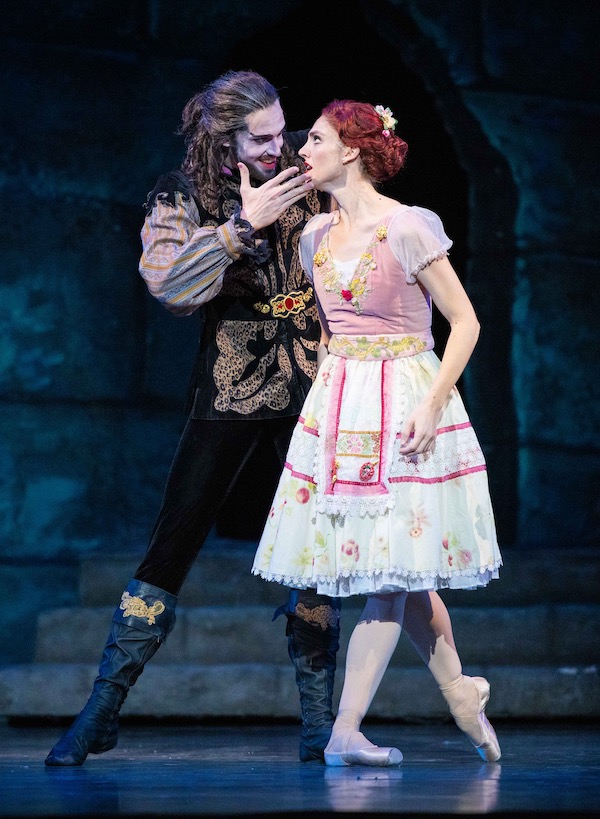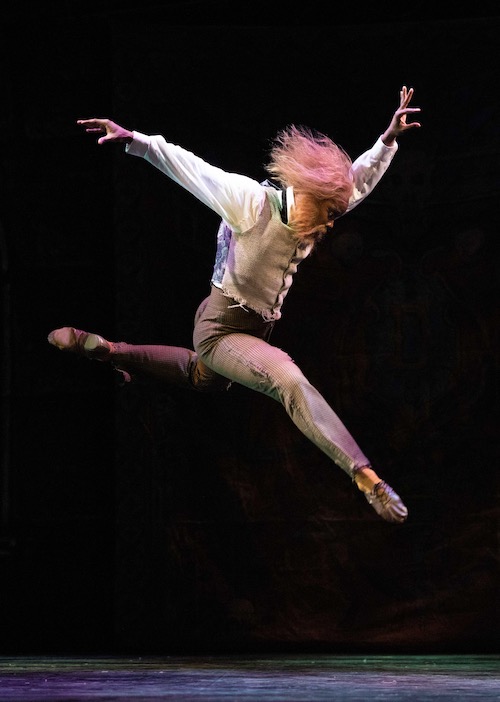Ballet West returns to life with a brilliant, haunting “Dracula”

Ballet West returned to the Capitol Theatre last weekend with a revival of Dracula, an engaging story ballet that premiered in 1997 at Houston Ballet and was last performed by Ballet West in 2011.
Like Utah Opera, with whom it shares the Capitol Theatre, Ballet West returned to large-scale, full-attendance performances this month after 18 months of scaled-back, Covid-safe events. Unlike Utah Opera, Ballet West did not require patrons to show proof of vaccination to enter. Although masks were required, the lack of a vaccine check may have left some patrons feeling a bit dubious.
Still, Ballet West could not have chosen a better piece to welcome patrons back, nor a more timely piece for Halloween. The choreography by British choreographer Ben Stevenson remains fresh after nearly a quarter century, and the company executed brilliantly. The character roles showcased not only the unique talents of the company, but the narrative power of dance itself.
Told in three acts, the story begins in the crypt of Count Dracula’s castle, with the Count (Chase O’Connell) waking and summoning his 20 brides. Dressed in frayed white gowns and moving in spectral ripples, they appeared to be in a trance that left them alive only to fulfill the wishes of their master.
Dressed in an embroidered cape that doubled as bat wings, O’Connell asserted dominance over all who were in the castle, imbuing Stevenson’s choreography with wicked relish. Over John Lanchbery’s inventive orchestral arrangement of Liszt’s macabre Totentanz, the brides writhed languidly around Dracula in groups of various sizes—with two of them unexpectedly taking flight—until the gloom was briefly dispelled by the arrival of a fresh face from the world of the living.
The fresh face belonged to Emily Adams as Flora. The village girl is kidnapped by the Count’s cowering henchman Renfield (Joshua Whitehead) to satisfy the count’s lust for fresh recruits. Flora’s bright red hair, colorful costume, and crisp movements created a contrast with the dark castle, which made her eventual succumbing to Dracula even more horrifying.
Set in the village on the 18th birthday of the Innkeeper’s daughter Svetlana (Beckanne Sisk), Act 2 created an even starker contrast. Every gesture celebrated the simple dramas and pleasures of life in a peasant village, including the pride of Svetlana’s father (Jordan Veit), his disdain for her Suiter, Frederick (Hadriel Diniz), and his eventual acceptance of Frederick after Svetlana’s pleading. The act also included the townsfolk gently teasing the couple, getting Frederick so drunk he can’t stop spinning, and indulging the romantic reminiscences of an old woman (charmingly portrayed by Amy Potter).
The Peasants’ joy came to life in Stevenson’s lusty, folk-inflected choreography, which mixed ballet steps with more earthy gestures, like peasants slapping the bottoms of their feet in delight. Like the first act and the rest of the ballet, the second act was underscored by Lanchbery’s arrangements of Liszt pieces for a 40-piece ensemble, and here he chose Liszt’s brightest Hungarian dances. The dark musical themes returned – subtly, at first, when Flora returned with a frightening, mad scene – and then in all their Macabre glory when Renfield arrived in his coach, pulled by un-dead horses and containing Dracula, who kidnaped Svetlana.
Act 3 was a gripping and terrifying battle at Dracula’s castle between the Count’s minions and the rescue party. It showcased Stevenson’s gift for narrative choreography, the lead dancers’ prowess and acting chops, and the stagecraft of the set designer (Thomas Boyd) costume designer (Judanna Lynn) and lighting designers (Tony Tucci from Tim Hunter’s original) Characters flew, disappeared into beds and floors, hid in unlikely places, and struggled to let in just enough sunlight to vanquish the Count.
As the ingenue couple, Sisk and Diniz brimmed with life, love, and personality. Their two pas de deux’s as well as their solo dances were master classes in technique, and they told the story as much with their facial expressions as well as their bodies.
Adams’ turn as Flora was a tour de force. Over the course of all three acts, she progressed from a frightened innocent in Act 1 to newly bitten madwoman, passing the point of no return as a devoted bride to the Count in act three. In her act three solo, she soared both literally and figuratively, in a scene that combined traditional pointe technique with flat-heeled sideways jumping.
The character roles were perhaps the most captivating. Veit’s endearing portrayal of the Innkeeper helped propel the joy of the second act and the sympathy he engendered made his peril in the third act more frightening.
Whitehead captivated and frightened as Renfield. With a werewolf-like physicality he strutted, fretted, and groveled over the more percussive parts of the score, where piano doubled timpani. He seemed to portray Dracula’s id as well as his procurer, and his twisted grief at his master’s demise was a terrifying flourish.
Dracula runs, with three different casts of principals, through October 30 at the Capitol Theatre. balletwest.org.

